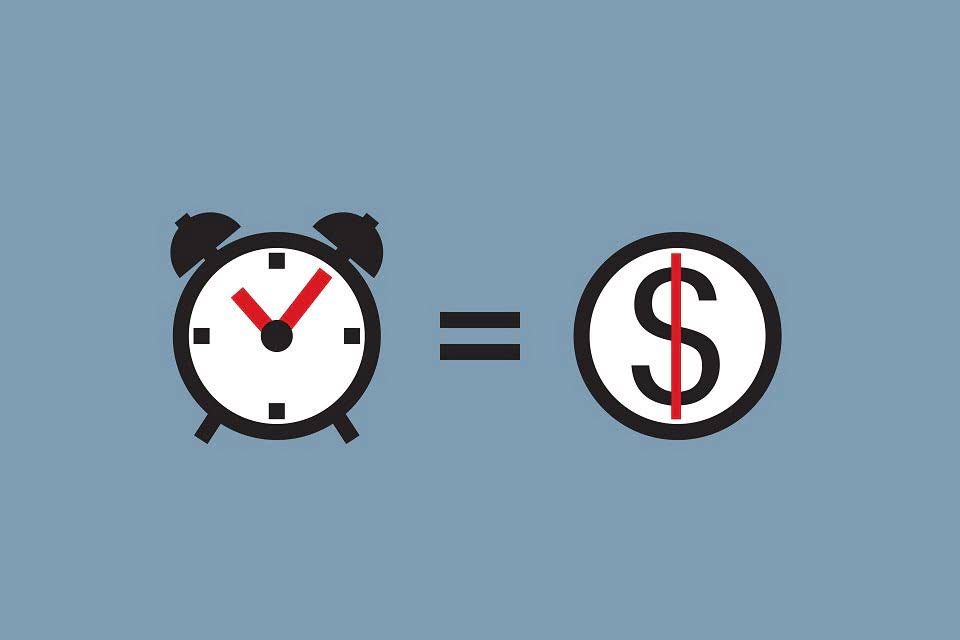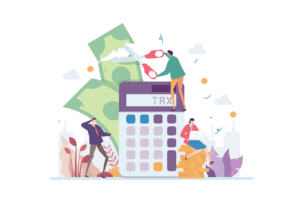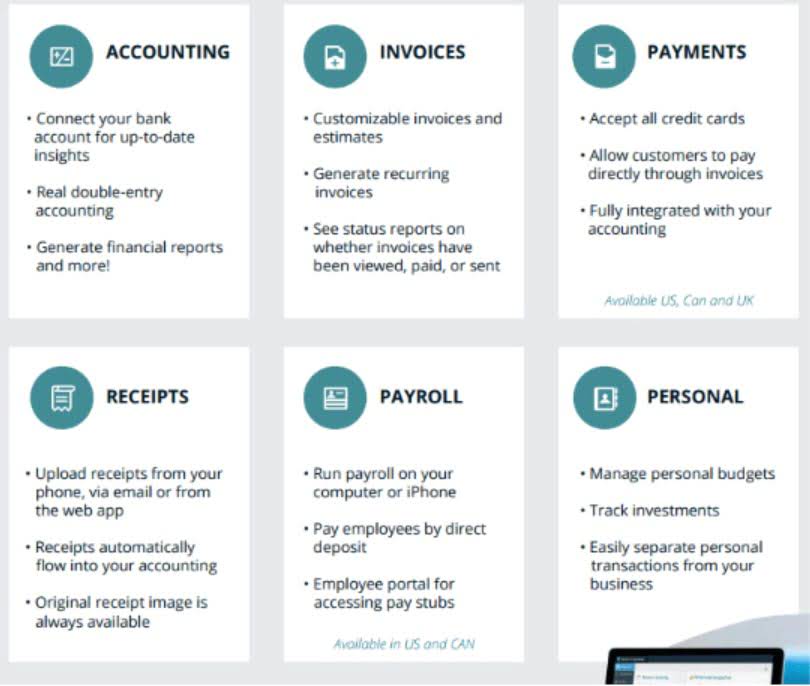Content

Here, you’ll have the choice to register as a sole proprietor which will give you access to a business number. Having a business number can be an important part of being a business owner. It gives you an identifier if you need to create a CRA account, make WorkSafe BC payments, or decide to incorporate later. A limited liability company (LLC) separates you from your business, removing the heavy financial burden.
What is the simple bookkeeping method?
Single-entry bookkeeping is a straightforward method where one entry is made for each transaction in your books. These transactions are usually maintained in a cash book to track incoming revenue and outgoing expenses. You do not need formal accounting training for the single-entry system.
Bookkeeping for a sole proprietorship can be simple enough for a shoebox accounting strategy or complex enough to enlist a professional. The difference lies in the size of your business and your long-term and short-term goals. Bookkeeping for sole priorietors, you are responsible for managing all aspects of your business, including finances. Bookkeeping is a crucial part of this responsibility, as it allows you to keep track of your income and expenses and make informed business decisions.
At the same time, Gen X fell for the American dream hook, line and sinker
As soon as your venture starts turning a profit, you’re a sole proprietorship. This applies to both the 16 year old mowing his neighbor’s lawn for gas money, and the wealthy tech entrepreneur investing her personal https://www.bookstime.com/articles/sole-trader-bookkeeping fortune to colonize the Moon. Until you file the necessary paperwork to elect a different business type, you’re a sole prop. A sole prop is a type of unincorporated business that is owned (and run) by one person.

When it comes to a name, choose one that appropriately represents your services. There are a few areas to consider when picking a business name in British Columbia. Keep in mind that submitting a name request for a partnership or sole proprietorship doesn’t secure the name’s availability if you incorporate later. The BC Government website walks you through some rules and tips for choosing the best name.
Profit
If you’re looking for accounting software for your small business, remember that not all software applications are created equal. Some applications are better suited to self-employed individuals or sole proprietors than they are to small businesses that have several employees or are in a growth state. Examples of business transactions that belong in your sole proprietorship accounting are business miles driven for purposes other than commuting, and legitimate business use of your home.

At the same time, a sole proprietor’s accounting system should integrate the connection between business and personal finances by tracking the flow of funds between different accounts. AccountingSuite is not as well-known as its competitors, but it offers many of the same features designed for the small business owner, including self-employed individuals and sole proprietors. A great fit whether you’re selling products or services, AccountingSuite includes excellent sales and inventory management capability, plus a time-tracking feature. While all of our top eight accounting software applications for self-employed business owners offer double-entry accounting, invoicing capability, and cash management features, they also contain a lot more. Some include a desktop timer that lets you track the time spent on any job.
Unit 13: Forms of Business Organizations
These debts can include small business loans or credit lines, whereas costs are factors like rent, taxes, wages, and salaries. If a sole prop owner decides to go out of business, the company dissolves. For instance, if you own a convenience store and you want to pass the business on to one of your kids, you’ll have to jump through some hoops. Other structures make this easier—by letting you bring them on as a co-owner or business partner before you leave. Sole proprietorships are free of these requirements making it simple and straightforward to start a new business. Typically, they don’t require a substantial initial investment to get started—for instance, in the form of equipment or a brick-and-mortar location.
- You may be satisfied with receiving positive customer feedback, but you won’t know until you look at your financial statements whether your business is actually making ends meet.
- Once you have an idea of what you’d like your name to be, you’ll need to check to see if it’s suitable and available by submitting a name request.
- You may think that C corporation tax rates look a lot higher than personal tax rates, but in reality, many corporations don’t pay any tax at all or pay taxes at much lower rates than you do.
- You can then calculate a corresponding percentage of your rent or mortgage payment and deduct it as a business expense.
- To get accurate metrics the business owner needs to input accurate data—which should only include financial information relevant to the business, and not any personal expenses.
Sole proprietorships are businesses that are intimately linked legally and financially with their owner operators. When a sole proprietorship loses money, its owner takes a personal loss and when it earns money he is taxed on it https://www.bookstime.com/ as personal income. Accounting principles for a sole proprietorship should create enough of a division between a business owner’s personal and business finances to determine which expenditures are legitimately tax deductible.
The pros and cons of running a sole proprietorship
Instead, your business income and expenses are reported on your individual income tax return and you pay taxes based on your tax bracket. Your business itself is not taxed separately, so your business income and losses get reported on your income tax return, and you’ll get taxed on all profits. Technically, there’s no legal requirement you need a business bank account for your sole proprietorship. However, it is strongly recommended—for all business owners in general—for a bunch of reasons. Since sole proprietorships don’t make a legal distinction between person and business, the business owner does not need to report a balance sheet as part of their tax return.
- Cloud accounting takes the frustration out of work by giving you simple tools to accomplish complicated tasks.
- Some applications are better suited to self-employed individuals or sole proprietors than they are to small businesses that have several employees or are in a growth state.
- So if you aren’t using a different name for your business, you can open up a business account in your own name.
- Whether you are starting your first company or you are a dedicated entrepreneur diving into a new venture, Bizfluent is here to equip you with the tactics, tools and information to establish and run your ventures.
- Remember the key to painlessly paying yourself is to keep your business records organized so you can make informed decisions about how much you should pay yourself, and always be ready for taxes.
- Formerly Sage One, Sage Business Cloud Accounting is an excellent option for self-employed business owners.
- Day-to-day bookkeeping is important—it lets you plan your business’s future and correctly file your taxes on time.
Sole proprietorships (sole props for short) are the most basic business structure in the United States. With a few exceptions, as soon as you go into business for yourself, you’re operating as a sole prop. These factors make sole prop the most popular business structure amongst small business owners. We enjoy talking to business owners and self-employed professionals who are looking to get the most out of their accounting firm. You can visit us at any of our locations, meet with us online through video call software, or talk to us by telephone.
Does a sole proprietor need a business license?
It includes enough granular detail to enable the creation of all the major financial statements, such as balance sheets, income statements, cashflow statements, and more. If you do decide to report your business income as a separate corporate entity, you must file Form 8832, Entity Classification Election, with the IRS. This form reclassifies the business — a step that’s necessary because the IRS automatically classifies a business owned by one person as a sole proprietorship. As a sole proprietor, you can choose to file as a corporation even if you aren’t legally incorporated.
- If you’re looking for the best accounting software for sole proprietors and the self-employed, there are a few features you should pay particular attention to.
- That said, here are our picks for the best accounting software for self-employed individuals.
- There’s a Pro plan for two users that runs $19/month, and Plus, Team, and Unlimited user plans are also offered.
- Lita was the content director for a financial services Web site, MostChoice.com, and managed the Web site, Investing for Women.
- The tax reporting for a sole proprietorship flows through the owner’s personal tax return, with a separate form used to itemize the major classes of revenues and expenses incurred by the business.
- Zoho Books includes good reporting options with a variety of standard reports available, and all reports are able to be exported using a CSV format or Microsoft Excel.
The more familiar you are with what’s coming in and out of your accounts, the more knowledgeable you’ll be about how to steady your cash flow. Time tracking – Track the time you spend working on projects from your cloud software. It helps to have a tool that can remind you of what you’ve done so you can bill for it later. It’s when money is taken out of the corporation and paid back to the owners either by way of salary or dividends that the tax is paid by the owners. LLCs are state entities, so the level of legal protection given to a company’s owners depends on the rules of the state in which the LLC was formed.
If you run your business as a sole proprietorship, you are not legally required to keep a separate bank account for your business. However, it is a good idea to do so unless your business is as simple and straightforward as a freelancing gig with a small handful of clients. Set up a spreadsheet that tracks each incoming payment and expense that comes into and out of your business bank account and credit card. Create a formula that provides a running total so that you can see your net revenue as you earn throughout the year.
How do I set up manual bookkeeping for my small business?
- Select an accounting method.
- Determine how you will record transactions.
- Set up a chart of accounts.
- Open a business bank account.
- Determine how your business will get paid.
- Keep a record of expenses.
- Make a schedule and set reminders.